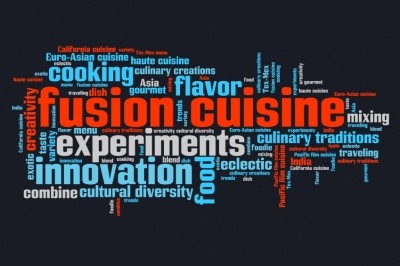FoodNavigator 2016: What's on our editorial calendar?

SPECIAL EDITIONS 2016-17
- JANUARY– Where next for organics?
- FEBRUARY– Colour trends
- MARCH– Flavour trends
- APRIL – Spotlight on start-ups and NPD
- MAY – Rethinking obesity: What works to cut calorie consumption?
- JUNE – Sustainable sourcing
- JULY - Ingredient sourcing in Africa
- AUGUST – IFT post-show round-up
- SEPTEMBER – Food for the elderly
- OCTOBER – Free from food
- NOVEMBER – Meat alternatives
- DECEMBER – Texture trends
- JANUARY – Sugar reduction
- FEBRUARY – Marketing to the ethical consumer
What will they cover?
Jan 2016 – Where next for organics?
Choosing organic food has become synonymous with health – but how accurate is this perception? Is the organic consumer making a lifestyle choice more than a health choice?
As more shoppers seek organic foods and drinks, FoodNavigator looks at how food manufacturers can tap into the trend. Is it enough to certify key ingredients? And what exactly is involved in the certification process?
We look at the main drivers behind the trend, the ongoing difficulties in sourcing organic versions of certain ingredients, and which product categories show the greatest potential among consumers.
Feb 2016 – Colour trends
Revised labelling requirements for artificial colours in the EU and continuing pressure for natural colourings from consumers have led industry to push the boundaries of natural colouring technologies.
In this special edition, FoodNavigator looks at the challenges of formulating with natural colours – where progress has been made and where solutions are still lacking – and takes a broader view on the reasons for colouring foods and the situations in which artificial colours are still preferred.
Mar 2016 – Flavour trends
What's hot and what's not in the world of flavour?
Beyond chocolate, strawberry and vanilla, what are the flavours we’ll be craving in sweets and dairy in the next ten years? Which cuisines will influence savoury snacks and packaged meals? And how do flavours move from the wacky fringes to the mainstream?
Find out what's happening at the cutting edge in this FoodNavigator special edition exploring the latest flavour trends and the latest science around flavour perception.
Apr 2016 – Spotlight on start-ups and NPD
Who are the most innovative food and drink companies in Europe, and how do they stay ahead of the latest trends?
This FoodNavigator special edition will explore how companies can best marshal resources to keep up a healthy pipeline of new products that meet consumers’ short, medium and long-term needs. How can manufacturers improve their NPD processes to achieve a better return on investment and bring more genuinely innovative products to market?
We’ll also talk to experts from Europe’s most innovative food companies to find out the secrets to their success.
May 2015 – Rethinking obesity: What works to cut calorie consumption?
Despite intensive efforts to fight obesity, no country to date has reversed its obesity epidemic. So what actually works to cut the calories that people consume – and how can food companies be part of the solution?
In this special edition, we’ll look at the potential for special diet foods, reformulation efforts, restrictions on marketing and portion size – and ask, how can the food industry continue to grow profits without selling ever more food?
In addition, we’ll weigh up voluntary industry efforts and regulatory approaches and ask whether it is realistic for public health bodies and industry to work together in the public interest.
Jun 2016 – Sustainable sourcing
Suppliers of every ingredient used in food and beverage production are facing increasing pressure from customers and consumers to show that they are operating a sustainable supply chain.
But what does this mean in practice, and how is sustainability being measured?
What are the roadblocks to 100% sustainable sourcing? How do consumers perceive sustainability – and how much does that matter? And, all going well, what will ingredient production look like a century from now?
This FoodNavigator special edition will explore what sustainability means across a range of different ingredient categories, and how food and beverage manufacturers’ understanding of it is changing their purchasing behaviour.
July - Ingredient sourcing in Africa
Africa is a potentially rich source of ingredients for the food and drink industry, but comes with major challenges for western companies.
From sustainability issues and workers’ rights, to regulatory hurdles and often shaky infrastructure, this FoodNavigator special edition will examine the biggest pitfalls facing European firms looking to do business in the region – and ways to tackle them head-on.
We will examine the ethical issues around sourcing commodities like palm oil and cocoa, as well as emerging ingredients like baobab and moringa – and also look at the potential for such ingredients in Europe. How is it possible to build a market for previously unheard of foods.
Aug 2016 – IFT post-show round-up
The FoodNavigator team was out in force at the IFT show in Chicago. Here's our round up of highlights from the biggest food science show in the world.
Sep 2016 – Food for the elderly
Foods aimed at older consumers are proliferating as nutritionally educated, ageing baby boomers seek products offering a health bonus, be it extra calcium or vitamin D for weary bones, antioxidant-loaded superfoods for heart health or omega-3s for optimised cognitive health. What are the formulation challenges in creating products with the right texture for older consumers who may have difficulty eating, which flavours are preferred? And how can food marketers put a positive spin on food for the elderly? We also scan the horizon for the latest developments in markets, regulation and science.
Oct 2016 – Free from food
The range of free-from foods available on supermarket shelves has skyrocketed in recent years, as mainstream retailers wake up to the opportunity, and suppliers have stepped up with a wide range of alternative ingredients, allowing manufacturers’ product development teams to provide a wider variety of free-from foods and beverages than ever before.
In this special edition, FoodNavigator looks at innovations in ingredients and finished products, and examines the market’s long-term potential.
Nov 2016 – Meat alternatives
Meat-free options have come a long way from the once-ubiquitous lentils and tofu, as food scientists have stepped up to the challenge of creating innovative meat substitutes.
In this special edition, FoodNavigator looks at the latest innovations in ingredients and new products on supermarket shelves, the drivers behind the meat-free market and the most promising opportunities for food manufacturers.
We’ll also examine the potential for more traditional vegetarian protein sources, like nuts and pulses, as well as the technological advances making more ‘meat-like’ plant-based foods possible.
Dec 2016 – Texture trends
Texture and mouthfeel often influence consumer perception of foods and drinks as much as flavour, so it is an element that manufacturers need to bear in mind at the very beginning of reformulation projects and new product development.
In this special edition, FoodNavigator explores how flavour and texture interactions can help produce healthier foods, the textural challenges of fat and sugar replacement, and the science of mouthfeel.
Also, how do product developers take into account different mouth behaviours – whether people prefer to chew or suck their foods – when it comes to texture development?
Jan 2017 – Sugar reduction
With rising rates of obesity and sugar’s health profile in the spotlight, consumers increasingly are seeking out reduced-sugar and reduced-calorie products. Some consumers are also sensitive to whether foods and beverages are 100% natural – while others are more concerned with calories alone.
In this special edition, FoodNavigator takes stock of the sweeteners market, including the impact of natural sweeteners, and the regulatory and technical issues around formulating with sweeteners and sugar alternatives.
Feb 2017 – Marketing to the ethical consumer
From Fairtrade to RSPO- and MSC-certified, there are literally hundreds of eco-labels vying for consumers’ attention. Is certification still the best way to stand out from the crowd, or are there better ways to communicate your company’s human rights, animal welfare, and eco-credentials?
In this FoodNavigator special edition, we look at the importance of social media, on-pack messaging and traditional advertising in creating a ‘story’ for your brand – as well as exploring the usefulness of certification from a consumer and company perspective.
In addition, we look at how the consumer feel-good factor makes foods taste good too.
EVENTS
FoodNavigator will also be hosting some exciting online events and forums with expert speakers from the food industry. You can sign up online to take part.
June 2016: Event – Weight management and obesity
February 2017: Event – Sugar reduction and sweeteners
May 2016: EVENT – Weight management and obesity
Obesity is associated with rising rates of heart disease, diabetes, and a swath of other chronic diseases. But shoppers are increasingly turned off by marketing focused on 'dieting', and regulatory efforts to tackle sugar, portion sizes and marketing to kids have not made much headway. So how can the food industry tackle the problem and protect its bottom line? We've gathered together market researchers, food manufacturers and consumer advocacy experts to find out.
February 2017: EVENT– Sugar reduction and sweeteners
Food and beverage manufacturers around the world are looking for ways to cut sugar in their products, particularly as the health effects of excess sugar are increasingly questioned.
The trend for low- and no-sugar items has extended well beyond ‘diet’ and ‘light’ soft drinks, to yoghurts and desserts, tooth-friendly gums and sweets, diabetic-friendly baked goods, and even reduced sugar soups, sauces and ketchup.
The drivers for these trends are diverse. Sugar policy has kept prices relatively high in some markets, particularly Europe and the United States, while the Chinese government is keen to remain self-sufficient in sugar and is looking at a suite of measures to sate its country’s increasing appetite for the sweet stuff.
Meanwhile, many parents are concerned about the amount of sugar in their children’s diets but are often looking for sweet alternatives that are free from artificial ingredients too.
But there are many challenges to reducing and replacing sugar in formulations – technical, regulatory and consumer-driven.
In this FoodNavigator online event, we look at the market for reduced sugar and zero-sugar products, how to deal with some of the technical challenges of sugar reduction, and areas food and beverage makers should be keeping an eye on for new opportunities.
GET IN CONTACT!
If you want to get involved with the editorial content of any of these specials or events, please contact Niamh Michail at niamh.michail@wrbm.com or Will Chu at will.chu@wrbm.com
------------------------------------
If you are interested in advertising on any of these specials, please drop Pierre Fetat a line: pierre.fetat@wrbm.com .























